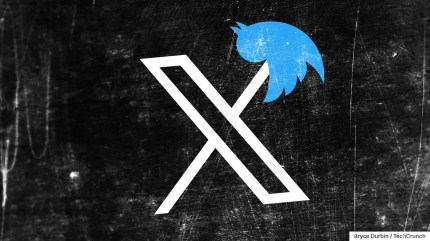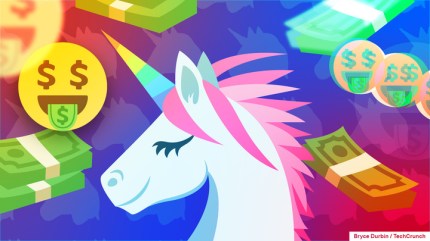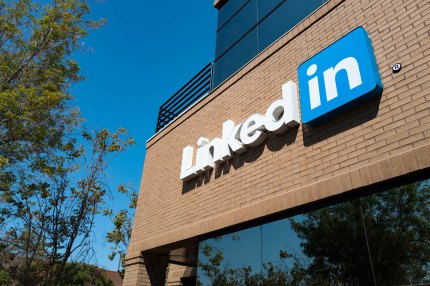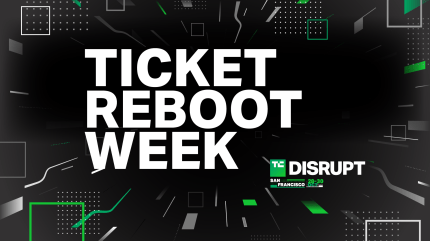 Everyone in the tech world talks about business models. But I’ll bet that if you quizzed a random sample of these people, you’d find that they really don’t know what a business model is. I did just that with my students at UC-Berkeley. Most raised their hands, and MBA student Blake Brundidge’s attempt to answer the question was a valiant one—but none of them really had a clue. The only one who got the answer right was Lionel Vital, a Stanford student gatecrashing my iSchool class.
Everyone in the tech world talks about business models. But I’ll bet that if you quizzed a random sample of these people, you’d find that they really don’t know what a business model is. I did just that with my students at UC-Berkeley. Most raised their hands, and MBA student Blake Brundidge’s attempt to answer the question was a valiant one—but none of them really had a clue. The only one who got the answer right was Lionel Vital, a Stanford student gatecrashing my iSchool class.
The reality is that a business model is like the old saying about teenage sex: everyone talks about it all the time; everyone boasts about how well he or she is doing it; everyone thinks everyone else is doing it; almost no one really is; and the few who are are fumbling their way through it incompetently. (Yes, I know things have changed.)
I’ll tell you what a business model is, in case you are quizzed by your investors.
 But first, let me answer the big question that is surely on your mind: what is a Stanford student doing at Berkeley? It may be that our classes at Berkeley are much better than those at Stanford. That is probably why Lionel approached me at the beginning of the semester and begged to be allowed to audit my class. To Lionel’s credit, he scored better than any of the Berkeley students. So perhaps some Stanford kids are a little smarter, but Berkeley students get better education? I know that our students certainly have a lot more fun. You just have to visit the campuses to note the stark difference.
But first, let me answer the big question that is surely on your mind: what is a Stanford student doing at Berkeley? It may be that our classes at Berkeley are much better than those at Stanford. That is probably why Lionel approached me at the beginning of the semester and begged to be allowed to audit my class. To Lionel’s credit, he scored better than any of the Berkeley students. So perhaps some Stanford kids are a little smarter, but Berkeley students get better education? I know that our students certainly have a lot more fun. You just have to visit the campuses to note the stark difference.
Now let’s discuss business models. Sorry, the teenagers reading this will need to get their sex education somewhere else. I teach only entrepreneurship and globalization.
Step one in building a successful business is to learn what products or technologies your customers really need and are willing to buy. This is an iterative process that I explained in this piece. The vast majority of technology startups fail because too few customers buy or use their products. So don’t underestimate the importance of validating and testing your ideas.
Developing the right product is hard. But what is harder is building a good business model. Fortunately, there’s nothing magical about a business model. It’s simply the nuts and bolts of how a business plans to generate revenue and profits. It details your long-term strategy and day-to-day operations.
Entrepreneurs put together elaborate business plans showing optimistic market-share projections. Even 1% of a billion-dollar market seems lucrative, right? Wishful thinking is great, but when it comes time to create your business model, you need to be realistic. The challenges differ from industry to industry, but here are seven basic components of a business model:
1. Reaching customers. Ralph Waldo Emerson famously said, “Build a better mousetrap, and the world will beat a path to your door.” The reality is that even if you did, no one would find you. Even when you know who your prospects are, it’s usually difficult and costly to reach them. You have to find them via the Internet and e-mail, or the old-fashioned way—through broadcast media, print ads, direct mail, telemarketing, or references or by cold-calling. And these potential customers are not likely to be waiting to hear from you and may not respond to you. So be sure you know how you are going to find and reach them.
2. Differentiating your product. You think you’ve got the very best solution, but so does the other gal (or guy). There’s always competition, whether you realize it or not. Smart marketing executives know how to develop unique product-positioning strategies that highlight a product’s true value. You need to thoroughly understand the competition and effectively communicate the unique advantages of your product.
3. Pricing. One of the most basic decisions you have to make is how much you’re going to charge for your product or service. Giving your stuff away is the way to go on the web, but remember that you still need to figure out how you are eventually going to make money—you can’t make it up on volume. Start by understanding how much customers value what they’re gaining from you. Then you need to estimate your total costs, analyze the competitive landscape, and map out your long-term strategy. For your company to survive, your product’s price must be greater than its overall cost.
4. Selling. Persuading customers to buy a product that they need is one of the most important skills an entrepreneur must learn (read It’s All About Selling for Survival). You’re going to be selling at every juncture. So you have to understand what it takes to close a deal and put together the necessary sales process. And this process has to be perfectly conceived. Be sure you test your selling strategy as you would your product.
5. Delivery/distribution. This is easy on the Internet. But for big-ticket items, you usually require a direct sales force; for mid-range products, distributors or value-added resellers; and, for low-priced items, retail outlets or the Internet. It’s different in every industry and for every type of product, but you have to get this right. Your products need to be designed and packaged for the channel through which they will be distributed to customers.
6. Supporting Customers. In addition to teaching customers how to use your product, you need to ensure that you can deal with defects and returns, answer product questions, and listen to and incorporate valuable suggestions for improvement. You may need to provide consulting services to help customers integrate and implement your products. If your product is a critical component of a business, you may also need to provide 24/7 onsite or web support.
7. Achieving customer satisfaction. The ultimate success or failure of a business depends on how much it helps customers achieve their objectives. Happy customers will become your best sales people and buy more from you. Unhappy customers will become your biggest liability.
 All the pieces have to come together like a jigsaw puzzle in your business model. The good news is that you don’t have to start from scratch when formulating it. You can give yourself a head start by learning from competitors and other markets. It is not only the successes that provide valuable lessons; it is also the failures.
All the pieces have to come together like a jigsaw puzzle in your business model. The good news is that you don’t have to start from scratch when formulating it. You can give yourself a head start by learning from competitors and other markets. It is not only the successes that provide valuable lessons; it is also the failures.
You can innovate as much in your business model as you do in your products. Be prepared to evolve your innovation strategy as you gain experience and as your market changes. Like your products, it will probably take several versions to get your business model right; you get better with practice.
Editor’s note: Vivek Wadhwa is an entrepreneur turned academic. He is a Visiting Scholar at UC-Berkeley, Senior Research Associate at Harvard Law School and Director of Research at the Center for Entrepreneurship and Research Commercialization at Duke University. You can follow him on Twitter at @vwadhwa and find his research at www.wadhwa.com.






























Comment